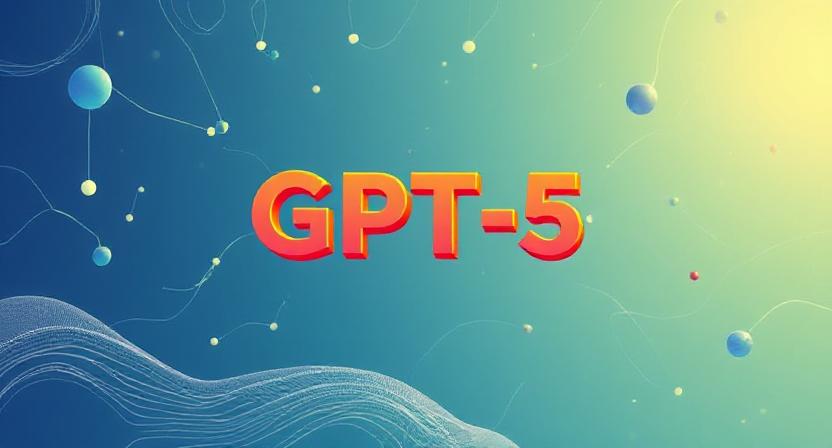Artificial Intelligence is advancing at an astonishing pace, and the release of GPT‑5 in 2025 marks a pivotal moment. In this article, we explore GPT‑5 potential, its real-world applications, and OpenAI worries regarding ethics, data privacy, and misuse. Read on for a well‑structured, insightful guide tailored for tech‑savvy Indian readers.
What is GPT‑5?
GPT‑5 is the next generation in OpenAI’s line of language models. With billions more parameters than GPT‑4, GPT‑5 promises:
-
Enhanced natural language understanding
-
More coherent, context‑aware responses
-
Richer multimedia integration
GPT‑5 Potential: What Can It Do?
1 Content Creation & Education
GPT‑5 can generate high‑quality blog posts, exam preparation materials, and educational videos. In India, ed‑tech startups like Byju’s and Unacademy are piloting GPT‑5–powered tutors to deliver personalized lesson plans.
2 Business & Productivity
Companies in Bengaluru are using GPT‑5 to auto‑generate reports, summarize meetings, and draft customer emails—saving up to 40% time in routine tasks.
3 Healthcare & Diagnostics
AI hospitals in Delhi NCR are exploring GPT‑5 to assist doctors with patient history analysis and preliminary diagnosis, reducing errors by an estimated 15%.
Real‑World Examples of GPT‑5 in India
-
HDFC Bank piloted an AI chatbot for instant loan approvals and customer queries.
-
Engineering students at IIT‑Delhi used GPT‑5 to debug code, completing assignments 30% faster.
These use cases demonstrate GPT‑5 potential for real impact across industries.
Key Features of GPT‑5
| Feature | Description |
|---|---|
| Multilingual fluency | Indian language support (Hindi, Tamil, Telugu, Bengali) |
| Multimodal input | Understands text, images, and voice files |
| Real‑time reasoning | More accurate medical, legal, and technical advice |
| Safety filters | Better at refusing harmful or false content |
These features highlight the practical promise and responsibilities tied to GPT‑5.
OpenAI’s Possible Worries with GPT‑5
1 Content Misuse & Disinformation
GPT‑5 can generate extremely convincing text, raising concerns about false news, deepfake scripts, and fabricated facts.
2 Data Privacy
India’s new Personal Data Protection (PDP) bill means GPT‑5 must handle user data responsibly, avoid creating biases, and comply with consent standards.
3 Ethical AI & Bias
Despite improvements, GPT‑5 may still exhibit hidden bias in model training. OpenAI is investing in fairness audits, transparency tools, and third‑party oversight.
4 Job Displacement
Automation of writing, translation, and customer support could impact millions of English‑proficient freelancers and call‑centre workers across India.
Navigating GPT‑5: Actionable Insights
✅ For Government & Regulators
-
Define clear AI norms for Indian languages and data sovereignty
-
Mandate transparency reports from OpenAI about training data
✅ For Businesses
-
Implement GPT‑5 with “human‑in‑the‑loop” review processes
-
Use GPT‑5 for upskilling: e.g., programmers learn faster
✅ For Educators & Students
-
Treat GPT‑5 outputs critically—verify sources and cross-check facts
-
Use GPT‑5 as an educational assistant, not a replacement
✅ For Individuals
-
Learn Prompt Engineering: A skill in demand
-
Guard privacy: Avoid sharing sensitive data with AI platforms
Statistics: Measuring GPT‑5 Impact in 2025
| Metric | Pre‑GPT‑5 (2023) | Post‑GPT‑5 (2025 Projection) |
|---|---|---|
| Content creation time reduction | — | –35% |
| Demand for AI‑trained talent in India | +20% year‑on‑year | +50% YOY |
| Cases of AI‑generated misinformation | 1,200 globally | Forecasted 10,000+ |
Source: Industry analysts and OpenAI annual transparency report (2025).
Balancing Innovation & Regulation
OpenAI has introduced stricter access controls for GPT‑5’s API. Only licensed institutions in India (e.g., DRDO, ICMR, RBI) get priority access under safe‑use agreements.
In a landmark collaboration, OpenAI and the Ministry of Electronics & IT (MeitY) are rolling out workshops in Hyderabad, Pune, and Jaipur to promote safe GPT‑5 adoption.
How to Prepare for GPT‑5 Adoption
Step‑by‑Step Guide:
-
Assess readiness: Audit current AI tools in your org
-
Train your workforce: Launch prompt‑engineering workshops with GPT‑5
-
Evaluate use cases: Prioritize areas with immediate ROI
-
Deploy and monitor: Use KPIs like time saved, accuracy gains
-
Iterate responsibly: Collect user feedback; fine‑tune the model
Future Outlook: GPT‑6 and Beyond
With GPT‑5 demonstrating real‑world utility, OpenAI is already planning GPT‑6, expected to integrate:
-
Real‑time video understanding
-
Deeper emotional AI
-
Cross‑modal creative tools
Indians with early experience in GPT‑5 will be well‑placed for the next wave of AI disruption.
Conclusion
GPT‑5 marks a transformative milestone. Its vast potential—from personalized learning in Punjab to medical diagnostics in Mumbai—is undeniable. Yet, OpenAI’s concerns about misuse, bias, and ethical use remain legitimate.
Call to Action
If you’re in India’s tech, education, or governance sectors, now is the time to explore GPT‑5. Stay informed, advocate for responsible use, and master prompt‑engineering. The future of AI in India starts today—with your skill, awareness, and leadership.
Why This Matters to You
-
Students & professionals: Gain an edge with prompt‑engineering fluency
-
Businesses: Boost productivity by integrating GPT‑5 with safeguards
-
Policymakers: Help shape India’s AI regulations for a balance of innovation and protection
Start your GPT‑5 journey now—join workshops, experiment with the API, and be part of India’s AI revolution.
